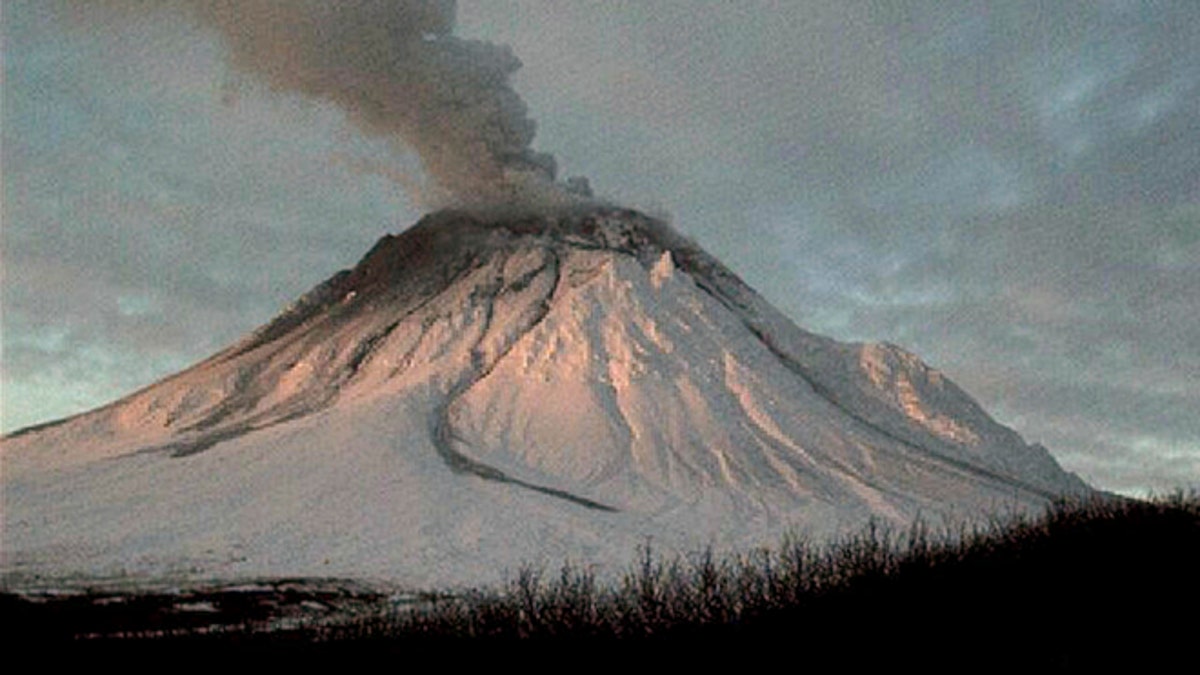
Jan. 12, 2006: The Alaska Volcano Observatory's Augustine Island webcam shows steam rising from Augustine Volcano 75 miles southwest of Homer, Alaska. (AP Photo/Alaska Volcano Observatory)
JUNEAU, Alaska – A smog-like haze that hung over part of Alaska's Kodiak Island this week was courtesy of a volcanic eruption -- 100 years ago.
The National Weather Service said strong winds and a lack of snow Tuesday helped stir up ash from the 1912 eruption of Novarupta, the largest volcanic blast of the 20th century.
The ash drifted up to about 4,000 feet and traveled over the Shelikof Strait and across Kodiak Island, prompting an aviation alert. The news was first reported by KMXT radio.
Weather service meteorologist Brian Hagenbuch said it isn't unheard of for ash from Novarupta to create a haze, but it isn't very common either. Winds in the area were blowing about 35 to 40 mph, with gusts of more than 52 mph.
Officials first picked up the haze on a weather camera Tuesday when the sun was rising. "It looked very foggy. ... It was kind of a curious thing," Hagenbuch said. "We didn't expect fog there."
As the day got lighter, the haze took on a "brownish, smog-type look," he said.
A satellite image showed a "milky white plume" spreading out from the northern Alaska peninsula, and authorities later confirmed the existence of ash particles, he said.
At Larsen Bay, a community of about 90 people on Kodiak Island's northwest coast, a thick haze lingered until late Tuesday afternoon, said Charlene Clampffer, the town's secretary.
"It was over everything," Clampffer said.
"It looked like it was going to rain or something when we first noticed it," she said. Then, people realized: "That's not clouds! That's ash from a volcano somewhere."
The ash wasn't alarming, as residents of Larsen Bay, about 280 miles southwest of Anchorage, have experienced haze from volcanoes before.
This time, ash dusted streets, boardwalks and cars.
"We had to wear masks and take care of ourselves," Clampffer said.
When Novarupta erupted in June 1912, it spit ash as high as 100,000 feet above the sparsely populated Katmai region, covering the remote area now known as the Valley of 10,000 Smokes to depths of up to 700 feet. The volcanic cloud spread across the U.S. and traveled as far as Algeria in northern Africa in what also was one of the five largest volcanic eruptions in recorded history -- 10 times more powerful than the 1980 eruption of Mount St. Helens in Washington.
Dave Schneider, a geophysicist with the Alaska Volcano Observatory, said it's no surprise a lot of ash remains at Novarupta. He said it will be that way for "many, many more years."




















